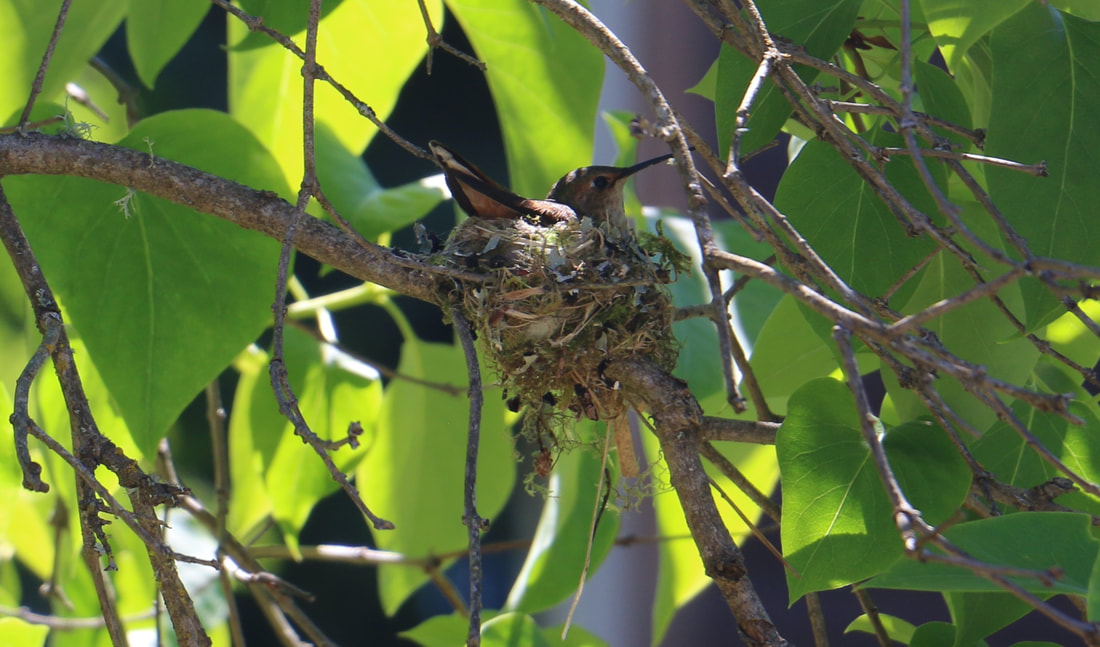|
Mary spied the nest first, clinging to a spindly branch on a decades-old lilac bush at the end of our driveway. It was tiny, and woven with spider silk, plant downs, feathers and moss -- a hummingbird’s nest for sure.
Gently pulling it to eye level, we looked inside. Empty. We didn’t know whether it was used and abandoned or in the process of becoming, so we left it alone, cradled there in a fork of a twisted branch. On a return from a day trip, Mary checked the nest again. This time, we saw the unmistakable silhouette of a hummingbird, her tiny body nestled on the cup-like nest. She remained still as we approached. We’ve encouraged hummingbirds to visit our home with plantings they love. Fucia, penstemon, cat mint and phlomis to name a few. And I’ve seen them sipping nectar from our apple blossoms as well, but this was the first time we saw one nesting. I think she is an Anna's hummingbird, the kind who stays nearby all year. Her tiny nest probably will hold two white eggs about the size of a coffee bean. She will incubate them for 15 to 18 days until the hatchlings emerge with eyes closed, tiny and featherless and dark in color with small yellow beaks. If all goes well, they will fledge three or four weeks after hatching and take their first flight. We’ll watch anxiously until then. On its slender lilac perch, the nest bounces perilously in even gentle winds. The whims of nature sometimes can be a heartless thing, we know, especially for young birds who perch in precarious places.
0 Comments
Leave a Reply. |
Archives
April 2022
Categories |

 RSS Feed
RSS Feed